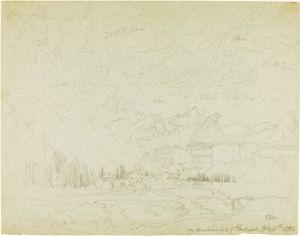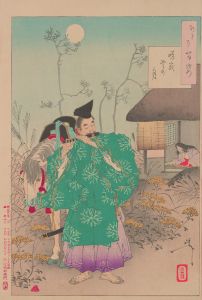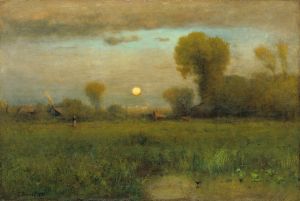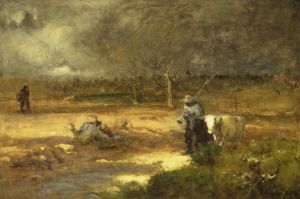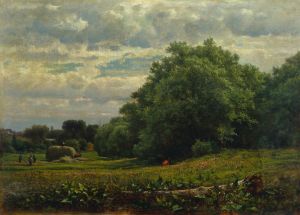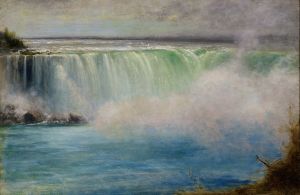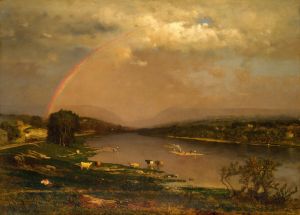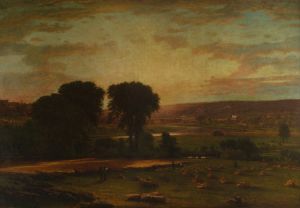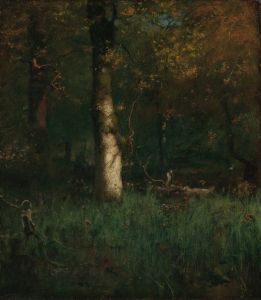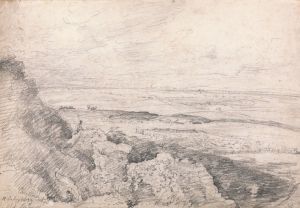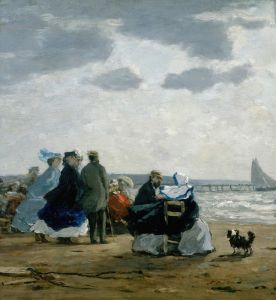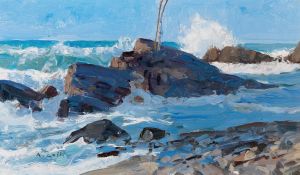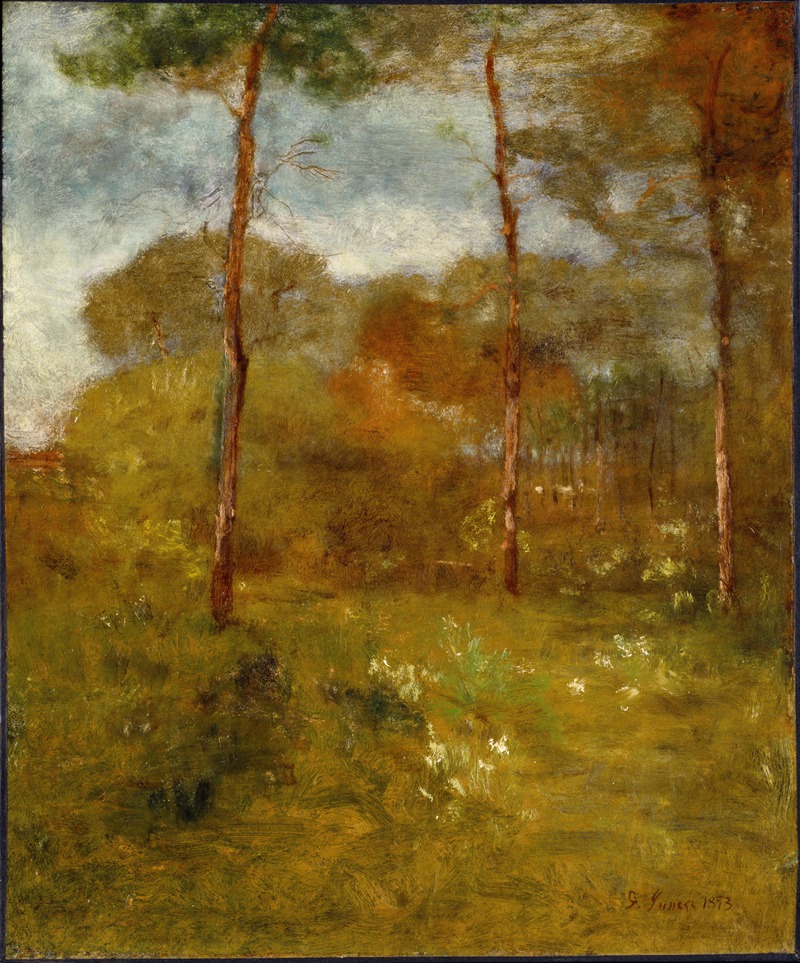
Orange Road, Tarpon Springs
A hand-painted replica of George Inness’s masterpiece Orange Road, Tarpon Springs, meticulously crafted by professional artists to capture the true essence of the original. Each piece is created with museum-quality canvas and rare mineral pigments, carefully painted by experienced artists with delicate brushstrokes and rich, layered colors to perfectly recreate the texture of the original artwork. Unlike machine-printed reproductions, this hand-painted version brings the painting to life, infused with the artist’s emotions and skill in every stroke. Whether for personal collection or home decoration, it instantly elevates the artistic atmosphere of any space.
"Orange Road, Tarpon Springs" is a painting by the American artist George Inness, completed in 1893. George Inness (1825–1894) is widely regarded as one of the most significant landscape painters in American art history, often associated with the Hudson River School and later the Tonalist movement. His works are celebrated for their spiritual and atmospheric qualities, blending naturalistic detail with a sense of transcendence.
This particular painting, "Orange Road, Tarpon Springs," was created during the final years of Inness's life, a period when his style had matured into a more expressive and poetic approach to landscape painting. The work depicts a serene scene in Tarpon Springs, Florida, a location Inness visited during his travels in the southern United States. The painting captures a rural road lined with orange trees, bathed in warm, golden light. The composition reflects Inness's mastery of color and light, as well as his ability to evoke a tranquil and meditative mood.
Inness was deeply influenced by the philosophical ideas of Emanuel Swedenborg, a Swedish theologian whose writings emphasized the connection between the natural and spiritual worlds. This influence is evident in "Orange Road, Tarpon Springs," as the painting conveys a sense of harmony and unity between humanity and nature. The soft, diffused light and the gentle blending of colors create an ethereal quality that invites viewers to reflect on the beauty and spirituality of the natural world.
The painting is an example of Inness's Tonalist style, characterized by its subdued color palette, atmospheric effects, and focus on mood rather than precise detail. This approach marked a departure from the more detailed and dramatic landscapes of the earlier Hudson River School, signaling a shift in American landscape painting during the late 19th century.
Today, "Orange Road, Tarpon Springs" is recognized as one of Inness's notable works from his later period. It is housed in the collection of the Metropolitan Museum of Art in New York City, where it continues to be appreciated for its artistic and historical significance. The painting serves as a testament to Inness's ability to merge technical skill with a profound sense of spirituality, making him a pivotal figure in the evolution of American art.





